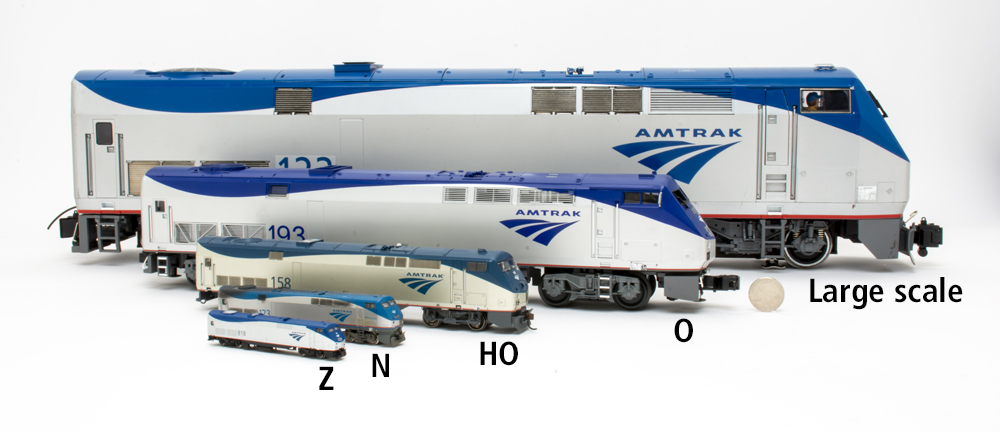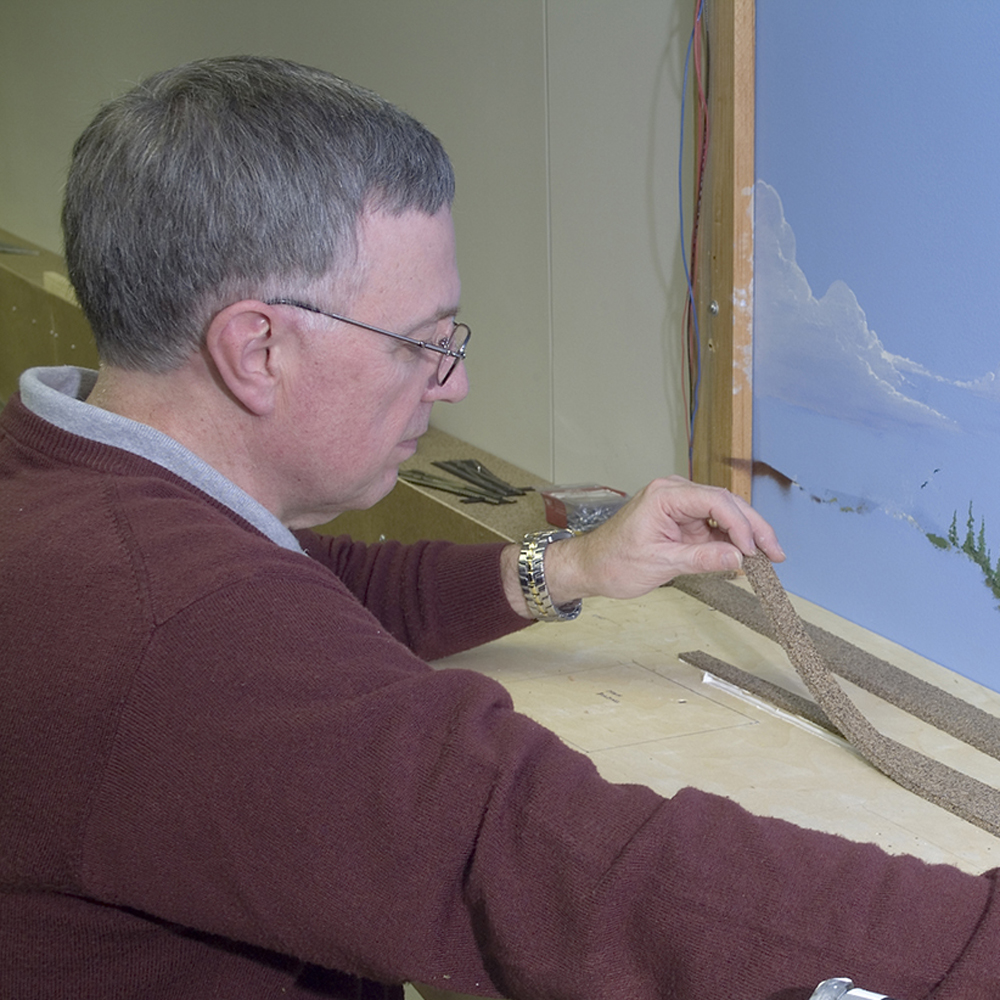
Model train scales come in a handful of commercial sizes.
Among the most popular model train scales in North America are HO, N, O and G. However, these letters stand in for very specific ratios that tell modelers what fraction they are using to scale, or model, reality.
What is a model train scale?
Scales are ratios or percentages used to measure models so that they are proportionate to their full-sized counterparts.
In North America, for instance, O scale is often noted as 1:48 scale. If you use a standard ruler to measure a 1-inch O-scale object, that object would be 48 inches long if it appeared as a full, life-sized object. Put another way, true O-scale objects are 48-times smaller than the life-sized objects they model.
Modelers sometimes purchase and use scale rulers that have hash marks indicating how many feet or inches long an object is in the chosen scale.
However, certain modelers use non-standard, or non-commercial, scales to build their own equipment based on their preferences or to better use commercially available materials.
Although we’ll only write more about commercial scales, modelers can choose any ratio to proportionally model a railroad.
Commercial model train scales
Products in commercially available scales have standards set for them by the National Model Railroad Association, which has also published a scale table online.
HO scale
HO is by far the most popular model train scale in the U.S. and Canada. The HO scale ratio is 1:87.1. HO scale modelers tend to have the widest variety of models available for rolling stock, locomotives, and buildings. Many modelers start with equipment in this model train scale and a flat sheet of plywood for a simple and satisfying display, or layout.
N scale
After HO, N scale is the most popular in North America. N scale is roughly half the size of HO scale at 1:160 ratio. Modelers tend to use N scale to build more complicated layouts in smaller spaces than HO scale layouts. Or they can use large spaces, such as garages or basements, to create scenic N scale empires using the size to create a life-like, but small scene.
O scale
O scale, at a 1:48 ratio, is another popular scale. It was one of the original model train scales and used by historic manufacturers, such as Lionel, to produce large volumes of toy trains from the late 1800s to the present. Many toy trains are O-gauge — indicating they can use O-scale tracks – but are typically not true scale models. Modelers with large spaces may use O scale to create detailed and majestic scenes. Often they use a narrow-gauge version (On3 or On30, which uses HO gauge track to run O scale models) to model industries such as logging railroads.
G scale
G scale can refer to any ratio of model railroad that is larger than O scale. Commonly built outdoors and referred to as garden railways, scale ratios include 1:32; 1:29; 1:24; 1:22.5; 1:19; and 1:12. Germany’s LGB manufacturers 1:22.5 trains, while 1:19 is a common scale in the United Kingdom.
Amusement parks, zoos, and special enthusiast clubs also host ride-on trains that may be larger than these ratios. However, operators tend to measure those trains by the distance between the rails, such as 7.5 inches, 15 inches, 2 feet, and so on.
Other commercial model train scales
S scale
S scale refers to model trains built to 1:64 ratio. While a minority scale, S modelers find it to be an ideal scale … big enough to be durable and reliable but small enough to allow modeling in a modest space. American Models offers a full line of locomotives, rolling stock and track, while a great deal of equipment is available from other companies and on the secondary market. The National Association of S Gaugers promotes and supports all forms of S (1:64) model railroading.
Z scale
Z scale is the smallest of the readily commercially available model train scales. Products in that scale are 1:220, or 220-times smaller than life-sized objects. Z scale layouts are rare and can often be seen in shows or conventions displayed in suitcases or other every-day objects to highlight how truly small the scale is. Other smaller scales are available, but will take some seeking out to find products and like-minded modelers. One of the smallest is T gauge.
Scale vs. Gauge
Scale is the ratio comparing the model to its real-life counterpart, whereas gauge is the measurement between the outer rails. O gauge, which is commonly used in garden railroading, refers in actuality to the gauge of the rails, which is 1.26 inches, rather than the scale of the models, though many O gauge trains are manufactured in O scale.
“Close enough” to scale
Although modelers make efforts to have each building, locomotive, and figure modeled in the scale they intend, it is often not possible. And in that vein, model railroaders may have to borrow from other hobbies such as military model makers that produce goods in 1:16; 1:30; 1:35; 1:72; and 1:144 scales. Higher-end toy manufacturers sometimes produce models to a scale of their choosing. And doll-house manufacturers often offer pieces in 1:12.
To achieve the right look for a scene, modelers may use models or equipment from foreign makers that produce goods in different ratios. The United Kingdom, for instance, sets HO-scale equivalent OO scale at 1:76.2 and N scale at 1:148.
The most important item for model railroaders to consider is how well any model appears with the other equipment they’ve already bought. Items that appear visually “correct” are sufficient. Models that look out of place, even if made in the proper scale, can be safely removed from the layout.
Which size is best
No one scale is right for everyone. Look at several scales and consider how much space you have to devote to your trains, whether you want to run longer trains amid towering scenery, and how much you can spend on your hobby.
Talk with experienced modelers, club members, and local hobby shop employees. Don’t worry if you change your mind and later decide that a different model railroading scale is a better choice for you. They’re all great.














Bachmann, Berlyn, and Accucraft have produced trains in 1:20.3 scale. I am not aware of 1:19 scale trains.